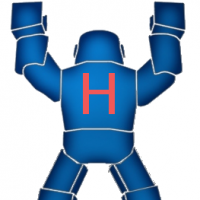Cell Phone Antenna
 william chan
Posts: 1,326
william chan
Posts: 1,326
Hi,
Can I use a piece of wire to replace a 1800 Mhz cellular antenna?
Will it still work with reduced signal strength or will it totally not work?
Can the "piece of wire" antenna be soldered directly to the gsm module or a coaxial cable is mandatory?
Thanks.
▔▔▔▔▔▔▔▔▔▔▔▔▔▔▔▔▔▔▔▔▔▔▔▔
www.fd.com.my
www.mercedes.com.my
Can I use a piece of wire to replace a 1800 Mhz cellular antenna?
Will it still work with reduced signal strength or will it totally not work?
Can the "piece of wire" antenna be soldered directly to the gsm module or a coaxial cable is mandatory?
Thanks.
▔▔▔▔▔▔▔▔▔▔▔▔▔▔▔▔▔▔▔▔▔▔▔▔
www.fd.com.my
www.mercedes.com.my


Comments
Leon
▔▔▔▔▔▔▔▔▔▔▔▔▔▔▔▔▔▔▔▔▔▔▔▔
Amateur radio callsign: G1HSM
Suzuki SV1000S motorcycle
Sorry for my ignorance...
How long is a 1/4 wave antenna for 1800 Mhz? Would 1/2 wave give better signal?
Should the ground be connected at all?
▔▔▔▔▔▔▔▔▔▔▔▔▔▔▔▔▔▔▔▔▔▔▔▔
www.fd.com.my
www.mercedes.com.my
Calculate the wavelength for 1800 MHz and divide it by 4.
A 1/2 wave antenna has a high impedance at the feedpoint and won't work properly without a matching network.
A 1/4 wave antenna requires a ground plane but the phone itself and the person holding it provide a ground that is sufficient for it to work reasonably well.
Leon
▔▔▔▔▔▔▔▔▔▔▔▔▔▔▔▔▔▔▔▔▔▔▔▔
Amateur radio callsign: G1HSM
Suzuki SV1000S motorcycle
They say it is due to the axial magnetic flux forming inside the coaxial cable that is suddenly exposed to air when it reaches the antenna.
Is it true?
▔▔▔▔▔▔▔▔▔▔▔▔▔▔▔▔▔▔▔▔▔▔▔▔
www.fd.com.my
www.mercedes.com.my
Leon
▔▔▔▔▔▔▔▔▔▔▔▔▔▔▔▔▔▔▔▔▔▔▔▔
Amateur radio callsign: G1HSM
Suzuki SV1000S motorcycle